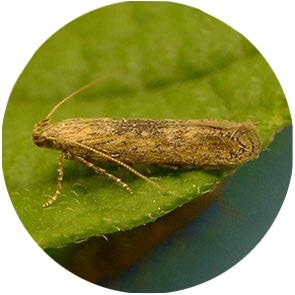


| Latin Name | Phthorimaea operculella |
| Common Name | Potato tuber moth |
| Biology | Adults are nocturnal, hiding during the day, with strong flight ability, laying eggs on potato leaves, stems, and tubers. Larvae bore into and feed on leaves, consuming mesophyll tissue to create curved tunnels; when damaging tubers, they bore into the interior to feed, forming holes that are prone to pathogen infection. This pest is prevalent in warm regions and is a key pest of potatoes. |
| Damage | This pest primarily damages potatoes but also affects eggplants, peppers, and other Solanaceae plants. |
| Distribution Regions | America and Africa |
| Monitoring | Pheromone lures mimic natural sex pheromones to attract male insects into specialized traps for population monitoring and suppression. As a core IPM component, monitoring enables early risk detection and targeted control. Mass trapping reduces mating opportunities to curb offspring populations. Protocols: ●Use only with matched traps. ●15-45 traps/hectare,replace/replenish every 4-6 weeks. ●Wear gloves or wash hands with detergent when switching lure types. ●Refer to trap-specific hanging instructions. |
| Recommended Traps | Delta Trap, Wing Trap |

Partagez vos coordonnées pour recevoir des solutions à phéromones adaptées avec précision. Si notre portefeuille existant ne propose pas la solution optimale, notre équipe de chimie de synthèse lancera un développement sur mesure – de la conception de la structure moléculaire à la production à grande échelle.